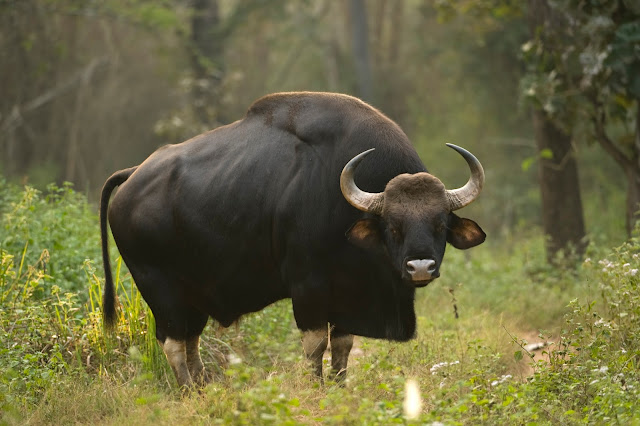The King Cobra- King of snakes
Now go for "The King"
Next Safari is for "The King Cobra Snake"
General Information
- The King cobra (Ophiophagus Hannah, also known as hamadryade) is a species of venomous snake in the family Elapidae.
- The King Cobra is the longest venomous snake in the world, capable of attaining length of 20 feet.
Physical Characteristics
- They can grow up to 18.5 feet. However, in most locations they are going to be about 13 feet in length.
- When they are fully grown they will weight 20 pounds.
- The males tend to be thicker around and to be longer. They also feature a wide head that is very large overall.
- They are fast moving snakes with amazing agility.
- The colour for the king cobra will depend on the location where they live. Olive green is the main base colour of most of them.
King Cobra Snake Venom
- The King Cobras venom is a neurotoxin, capable of killing humans. The mortality rate can be as high as 75%, however bites involve nonfatal amounts.
- Their venom is not the most potent among venomous snakes, however the amount of neurotoxin they can deliver in a single bite - up to two-tenths of a fluid ounce (seven millilitres)- is enough to kill 20 people, or even an elephant.
- The King cobra venom attacks the nervous system and quickly induce several pain, blurred vision, vertigo, drowsiness and paralysis.
- In the minutes following, cardiovascular collapse occurs and the victim falls into a coma. Death soon follows due to respiratory failure.
King Cobra's food
- The King Cobra snakes diet is mainly composed of other snakes (Ophiophagy- a specialized form of feeling or alimentary behaviour of animals which hunt or eat snakes).
- The King Cobra snake prefers non-venomous snakes. However, it will also eat other venomous snakes including kraits and Indian Cobras.
- King Cobras, like other snakes, smell using their forked tongue which picks up scent particles and transfers them to a special sensory receptor, located in the roof of its mouth.
- When the scent of a potential meal has been detected, the snake will continue to flick its tongue to gauge the preys direction. It will also rely on its excellent eyesight. The King Cobra snake is able to detect moving prey almost 300 feet (100 metres) away.
- The King Cobra snake uses sensitivity to vibrations and outstanding intelligence (compared to that of other cobra species) to track its prey.
King Cobra Habitat
- The King Cobra snake lives in much of mainland South East Asia and throughout the dense highland forests.
- The King Cobra has a preference for living in area where there are lakes and streams as it is an excellent swimmer.
- the King Cobra populations have reclined in some areas of its range due to the destruction of forests.
- However, despite this the snake is not listed by the IUCN as in danger of becoming extinct.
- The King Cobra is said to be the only snake which makes nests for its eggs.
- It is widely worshipped in India as Nagaraj ("King of snakes").
King Cobra Snake Reproduction
- Breeding usually takes place in late spring or early summer. After mating, the male will return back to its own home.
- The female then lay between 10 to 25 eggs. The offspring are independent as soon as they are born and capable prey the size of a rate.
- breeding takes place when two snakes twist their bodies together and last for days in this position.
- The female will then wait approximately 55 days before laying eggs.
- Female offspring are not bigger than male offspring. The King cobra average life span is about 20 years.







Comments
Post a Comment